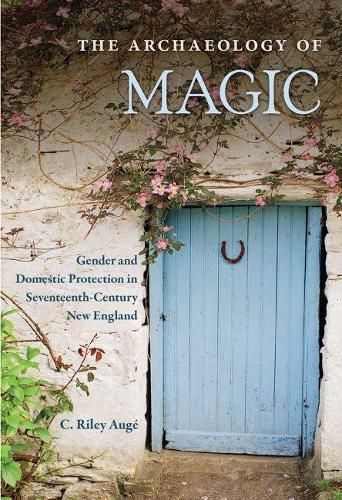Readings Newsletter
Become a Readings Member to make your shopping experience even easier.
Sign in or sign up for free!
You’re not far away from qualifying for FREE standard shipping within Australia
You’ve qualified for FREE standard shipping within Australia
The cart is loading…






This title is printed to order. This book may have been self-published. If so, we cannot guarantee the quality of the content. In the main most books will have gone through the editing process however some may not. We therefore suggest that you be aware of this before ordering this book. If in doubt check either the author or publisher’s details as we are unable to accept any returns unless they are faulty. Please contact us if you have any questions.
In The Archaeology of Magic, C. Riley Auge explores how early American colonists used magic to protect themselves from harm in their unfamiliar and challenging new world. Analyzing evidence from the different domestic spheres of women and men within Puritan society, Auge provides a trailblazing archaeological study of magical practice and its relationship to gender in the Anglo-American culture of colonial New England.
Investigating homestead sites dating from 1620 to 1725 in Massachusetts, Rhode Island, and Maine, Auge explains how to recognize objects and architectural details that colonists intended as defenses and boundaries against evil supernatural forces. She supports this archaeological work by examining references to magic in letters, diaries, sermons, medical texts, and documentation of court proceedings including the Salem witch trials. She also draws on folklore from the era to reveal that colonists simultaneously practiced magic and maintained their Puritan convictions. Auge exposes the fears and anxieties that motivated individuals to try to manipulate the supernatural realm, and she identifies gendered patterns in the ways they employed magic. She argues that it is essential for archaeologists to incorporate historical records and oral traditions in order to accurately interpret the worldviews and material culture of people who lived in the past.
Published in cooperation with the Society for Historical Archaeology
$9.00 standard shipping within Australia
FREE standard shipping within Australia for orders over $100.00
Express & International shipping calculated at checkout
This title is printed to order. This book may have been self-published. If so, we cannot guarantee the quality of the content. In the main most books will have gone through the editing process however some may not. We therefore suggest that you be aware of this before ordering this book. If in doubt check either the author or publisher’s details as we are unable to accept any returns unless they are faulty. Please contact us if you have any questions.
In The Archaeology of Magic, C. Riley Auge explores how early American colonists used magic to protect themselves from harm in their unfamiliar and challenging new world. Analyzing evidence from the different domestic spheres of women and men within Puritan society, Auge provides a trailblazing archaeological study of magical practice and its relationship to gender in the Anglo-American culture of colonial New England.
Investigating homestead sites dating from 1620 to 1725 in Massachusetts, Rhode Island, and Maine, Auge explains how to recognize objects and architectural details that colonists intended as defenses and boundaries against evil supernatural forces. She supports this archaeological work by examining references to magic in letters, diaries, sermons, medical texts, and documentation of court proceedings including the Salem witch trials. She also draws on folklore from the era to reveal that colonists simultaneously practiced magic and maintained their Puritan convictions. Auge exposes the fears and anxieties that motivated individuals to try to manipulate the supernatural realm, and she identifies gendered patterns in the ways they employed magic. She argues that it is essential for archaeologists to incorporate historical records and oral traditions in order to accurately interpret the worldviews and material culture of people who lived in the past.
Published in cooperation with the Society for Historical Archaeology